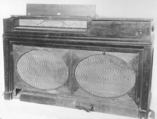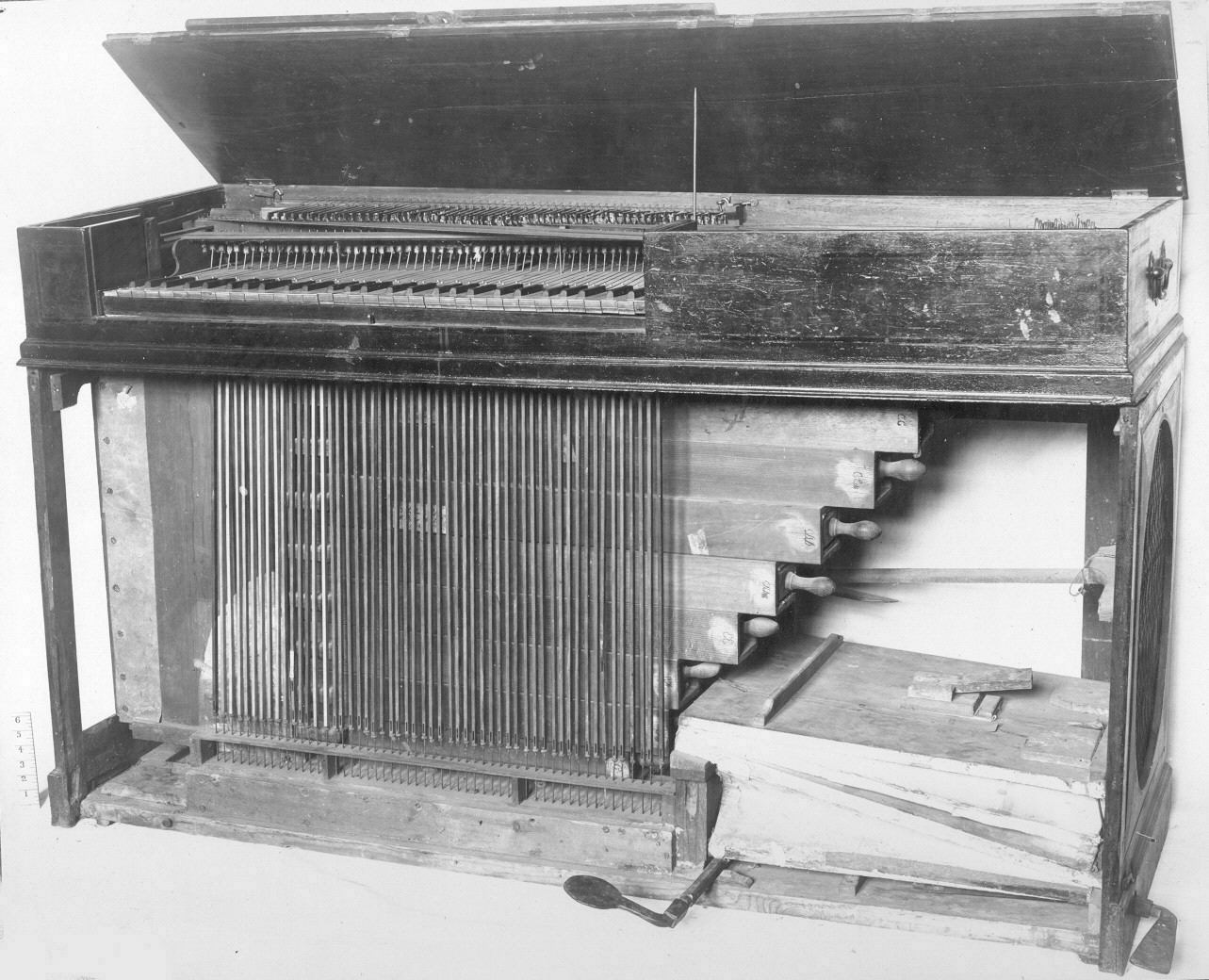Organized square piano (square piano and pipe organ)
Longman & Broderip
Eaton Pelham (?) British
Not on view
This organized piano, or square piano with an organ, is an extremely rare instrument. It is signed by Eaton Pe[ther]? and the nameboard lists the piano making firm of Longman & Broderip. The case is of mahogany, with the piano on top. A hinge on the back of the piano case allows the piano to open up for access to the box below containing the organ mechanism. The bellows are located in the lower right of the case and can either be pumped by the player using a pedal to the right side of the keyboard, or by a second person standing to the side of the case.
Two similar piano-organ instruments exist, one also by Longman & Broderip (serial number 1742) in the Vienna Kunsthistorisches Museum and one by Johannes Pohlman located in the Leipzig collection.
Technical description: Rectangular mahogany veneer piano case hinged on lower back edge to rectangular box containing organ mechanism; piano has iron handles at ends to facilitate lifting, organ case sides have removable panels containing large cut-out ovals covered with chicken-wire net backed by crimson cloth (replacement); woodwork decorated with crossbanding and striping; very thick piano case bottom cut through below keys, allowing long stickers to extend directly to bottom of organ box, where stickers operate valves in enclosed windchest; bellows located at bottom right side, pumped by foot pedals (missing: 1 on case front; 1 on right side); 19 stopped wood pipes mounted horizontally, 35 vertical openwood pipes; holes in bottom front for 13 vertical open wood pipes; holes in bottom front for 13 pedals serving lowest octave of pipes; compass: piano FF-f3 (61 keys); organ C-f3 (54 notes); ivory naturals, molded fronts; ebony(?) slips over darkened accidental blocks; 4 handstops (1 missing) in well to left of keyboard: 2 lift dampers (split at c1), 1 lifts buff or lute stop batten against strings in front of nut, 1 provides piano stop by raising hammers; stop knob for bringing organ stickers into position beneath keys is missing; piano with English simple action, no escapement; overhead damper arms attached to hinged panel in spine, raised by wood rods against pressure of wire springs; piano keyboard operates organ by direct mechanical linkage (stickers); double-strung FF-b2, triple-strung c3-f3: FF-G wound.
Double fold diagonal reservoir with pedal-operated feeder located below it (pedals missing, but iron trapwork is present; the organ can be pumped either by the player's right foot or by a second pedal on the right side of the case). Feeder and reservoir share common inclined surface and occupy right side of organ case. Windchest located on floor of case beneath piano keyboard. Grid of oad (non-constructed form). Wooden stickers convey key action to pallets. Upper mortised rack supporting stickers extends to FF (the lowest keyk on the piano), however, the lowest organ note is C. (It is possible that the sticker rack was marked out from the keyboard and mortised inadvertently from FF to BB.) (L. Libin 29 Sept 76)
Due to rights restrictions, this image cannot be enlarged, viewed at full screen, or downloaded.
This artwork is meant to be viewed from right to left. Scroll left to view more.



